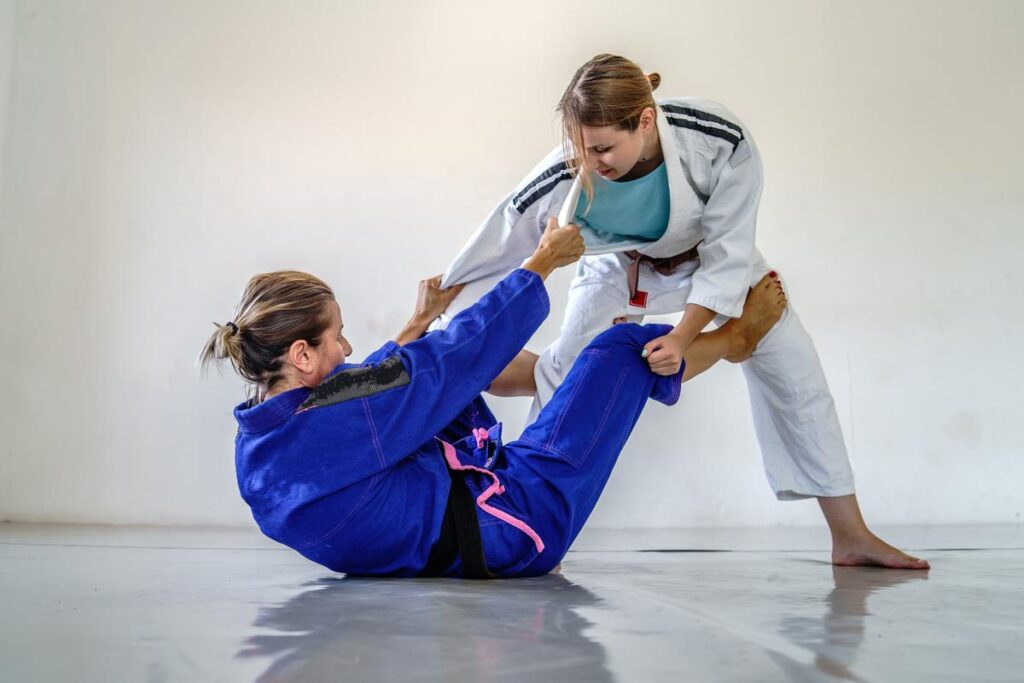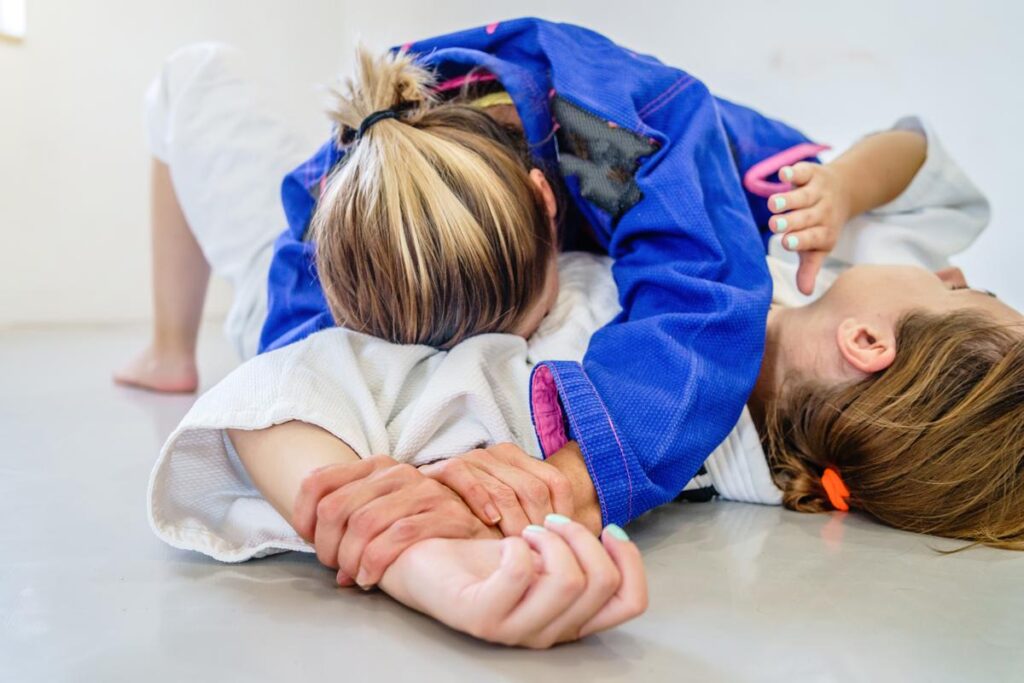The use of wrist locks in Brazilian jiu-jitsu competitions and training environments has been a subject of much debate within the BJJ community. Wrist locks involve manipulating an opponent’s wrist joint in ways that can hyperextend the wrist and cause severe pain or injury.
While wrist locks have existed in traditional martial arts for centuries, some argue they pose too high of a risk for abuse and injury in modern BJJ matches and sparring.
This article seeks to explore the central question around wrist locks in BJJ: Are wrist locks legal in BJJ? By reviewing the official rules of major BJJ federations, perspectives from experts, and the arguments surrounding the ethics of these techniques, we hope to reach a nuanced conclusion on whether wrist locks should be considered legitimate maneuvers in sport BJJ.
In this article, we want to take an honest look at whether wrist locks should be fair game in BJJ competitions and training. To do that, we’ll check out the official rules from big BJJ organizations like the IBJJF and ADCC to see where they stand.
We’ll also include some perspectives from BJJ instructors and competitors since they’re the ones that have to actually implement these techniques safely.
There are decent arguments on both sides of this issue. Some feel wrist locks are too risky and prone to abuse if people aren’t disciplined.
Others think they’re effective moves that should be allowed if controlled properly. By exploring all aspects, hopefully we can get closer to answering the big question: are wrist locks legit techniques in sport BJJ?
There’s definitely some nuance here, and we don’t want to be cavalier about a technique that could injure someone. But with an open mind, we might be able to come to a reasonable conclusion on the use of wrist locks that keeps the spirit of jiu-jitsu alive.
Wrist lock is mostly seen as prevalent among white belts bjj artists or sometimes this question has also been raised do white belts do wrist lock in bjj?
History of wrist locks in martial arts like Judo and traditional jiu-jitsu
Wrist Locks in Judo
Judo’s been around since the late 1800s in Japan. From the start, it included wrist locks as part of the throwing and grappling game.
These techniques focused on controlling the wrist joint in ways that caused discomfort or pain. Skilled judoka used them strategically along with other moves to get leverage over their opponent. Proper positioning and understanding joints was key to pull them off smoothly.
Over time, as judo became more about sport, wrist locks got restricted and eventually banned from competition. The goal was to reduce serious injuries now that people weren’t preparing for actual combat. Safety first!
Wrist Locks in Traditional Jiu-Jitsu

Old school jiu-jitsu made wrist locks a big part of training for self-defense. Unlike sport martial arts with rules, it prized effectiveness above all else. Wrist locks let you swiftly disable an attacker without relying only on strength or size. By attacking a vulnerable joint, smaller jiu-jitsu fighters could control larger opponents.
When BJJ branched off, it kept some of the wrist lock techniques but didn’t emphasize them as much. The focus shifted more towards ground fighting and submissions using chokes and locks on the upper body and legs. Wrist locks stuck around but played a smaller role in the evolution of modern Brazilian jiu-jitsu.
Let me know if you would like me to expand or clarify any part of this rewrite! I aimed to cover the topics in an appropriate, conversational way.
How wrist locks were introduced into Brazilian jiu-jitsu
We have discussed history of wrist locks in bjj and now we’re going more further to “are wrist locks legal in bjj“

Wrist locks, also called kote gaeshi in Japanese martial arts, made their way into BJJ from arts like Judo and Aikido. They became popular with BJJ fighters because they allowed for joint manipulation and submission holds. BJJ legends like Helio Gracie incorporated them into the core curriculum which led to widespread use.
Why Wrist Locks are So Versatile
These techniques can be pulled off from almost any position – top, bottom, transitions – you name it! Catching your opponent sleeping for a split second can allow you to slap on a slick wrist lock. Whether you’re in guard, side control, mount, doesn’t matter. Wrist locks are an unexpected weapon to have in your arsenal.
Some Common Wrist Locks in BJJ
The Kimura lock hits the wrist, elbow, and shoulder together. It’s known as an extremely effective submission for controlling your opponent and forcing them to tap out.
The Omoplata mainly immobilizes the shoulder, but it also messes up the wrist and elbow. Use your legs to trap their arm and crank on the wrist for a submission.
The Gogoplata requires flexibility. Use your shin on their windpipe while cranking the wrist. A rare move but it can work if you pull it off.
Risks and injuries associated with wrist locks

Wrist locks can be useful for controlling an opponent, but they aren’t without risk. For safe training, it’s key to know what could go wrong with these techniques.
Joint Injuries
Applying too much pressure on the wrist can lead to sprains, strains, dislocations, and even breaks. The wrist is complex and fragile, so forcing it into unnatural positions is asking for trouble.
Soft Tissue Damage
The ligaments and tendons around the wrist are also in danger. Too much torque results in severe pain, loss of mobility, and long-term complications. This can really mess with everyday tasks in life, not just jiu-jitsu.
Nerve Compression
If a wrist lock is done incorrectly or with too much force, nearby nerves can get pinched. This leads to numbness, tingling, and loss of sensation in the area. Temporary paralysis is also possible. Nerve issues like these require lengthy recovery and can seriously impact quality of life.
The bottom line is that cranking and tweaking wrists in the wrong way carries short and long term risks. Being mindful of technique and pressure levels during training is key to avoiding unnecessary injury. Slow and steady wins the race when it comes to applying submissions smoothly and safely.
Permissibility of Wrist Locks in BJJ Competitions
Now that we understand the potential risks associated with wrist locks, let’s explore their legality within the realm of BJJ competitions. It is essential to note that rules and regulations may vary across different BJJ organizations or tournament circuits.
Hence, it is crucial for practitioners and competitors to familiarize themselves with the specific regulations governing the events they participate in.
1. Traditional BJJ Competitions
In traditional BJJ competitions, wrist locks are generally permitted and considered legitimate techniques when executed within the established guidelines. Competitors must execute wrist locks with controlled force and be mindful of their opponent’s safety. Referees closely monitor matches to ensure compliance with regulations, and competitors are expected to tap out or verbally submit when trapped in a well-executed wrist lock.
2. Rule Variations
However, it is worth mentioning that some BJJ competitions or schools may have specific rule variations regarding the permissibility of wrist locks. These variations could include limitations on certain types of wrist locks, such as those that target specific angles or allow the use of excessive force. As such, competitors should always familiarize themselves with the rules and guidelines specific to the tournament they plan to participate in to avoid any confusion or potential penalties.
3. Safety and Consent
Ultimately, the legality of wrist locks in BJJ competitions depends on prioritizing safety and consent. While wrist locks are permitted techniques, it is crucial for practitioners and competitors to approach them responsibly. Prioritizing the well-being of training partners and adhering to the principles of fair play should always be paramount. As with any combat sport, mutual respect and consent between practitioners form the foundation of a positive and safe environment for all involved.
Breaking Down the Rules on Wrist Locks
To really understand if wrist locks are fair game, we gotta look at what the main BJJ organizations say. Rules can vary a bit between competitions, so let’s dive in.
IBJJF Rules
The IBJJF is the big dog when it comes to tournaments. They allow wrist locks for adults and masters, gi and no-gi. But they don’t let white belts under 16 use them in gi divisions.
NAGA Rules
NAGA follows IBJJF pretty closely. But they give the green light on wrist locks for all belt levels, gi and no-gi. No age restrictions here.
ADCC Rules
ADCC focuses on elite grappling matches. For their gi and no-gi contests, wrist locks get the OK subject to weight class and belt. But restrictions apply in some cases.
Other Orgs
Tons of local tournaments and smaller organizations host events too. Most keep wrist locks legal, but always check the specific rules where you’re competing.
Perspectives from BJJ Instructors on Wrist Locks
BJJ instructors tend to have nuanced perspectives on the use of wrist locks during training. Many advocate introducing wrist locks in a progressive manner, starting at higher belt levels and with strong emphasis on control. Reasons cited include:
- Wrist locks require finesse to avoid injury, which takes experience
- Higher belts can more safely experiment with wrist locks during sparring
- New students should learn positional dominance before submissions
- It is easier for beginners to injure training partners accidentally with wrist locks
However, some instructors believe starting wrist locks earlier allows students to ingrain control from the beginning. Arguments include:
- Early exposure teaches responsibility and discipline
- Technical application can be taught incrementally
- Lower belts can drill wrist locks slowly without full sparring
- Waiting too long develops bad habits of cranking submissions
Appropriate Belt Levels for Wrist Locks
Generally, white and blue belt ranks are seen as less appropriate for live wrist lock sparring. Reasons include lack of experience reading partners’ flexibility and pain tolerance.
Upper belt levels like purple, brown and black are viewed as more suitable for wrist locks. Their mat time allows them to apply techniques responsibly.
But some academies introduce wrist locks earlier, having white belts drill the motions slowly and tap early. The emphasis is always on control.
The consensus seems to be progressive integration, with sparring intensity increasing with experience. Communication with partners and instructors is key throughout.
Wrapping Up On “Are Wrist Locks Legal in BJJ?”
In summary, the major BJJ competition rulesets tend to allow wrist locks, with some restrictions based on factors like age and belt level. Organizations like IBJJF, ADCC, and NAGA have guidelines permitting wrist locks in both gi and no-gi divisions for adult competitors.
However restrictions sometimes exist for younger ages and lower experience levels, and I hope now you got all the information on “Are Wrist Locks Legal in BJJ?“
BJJ instructors provide recommendations for safely training with wrist locks. Introducing them progressively based on rank, emphasizing control, and drilling technique in a limited manner at first are common suggestions. Clear communication and respect for partners are essential.
When applied in a controlled, ethical manner with caution, wrist locks can be effective tools for more advanced BJJ practitioners. They offer unique submission and transition opportunities.
However, the risks of wrist locks must always be weighed against the benefits. Proper regulation, technical skill, and responsible practice are key to reducing chances of injury.
In conclusion, wrist locks generally appear to be legal techniques within the BJJ rulesets, with some exceptions. Their safe integration requires care, discipline, and an attentive instructor.
If implemented progressively and conscientiously, wrist locks can provide advanced students new dimensions within training and competition. But restraint and precaution must be exercised at all times when utilizing these potentially dangerous submissions.
FAQs On “Are Wrist Locks Legal in BJJ?”
Are wrist locks allowed in IBJJF competitions?
Yes, wrist locks are permitted under IBJJF rules for adult and masters divisions of both gi and no-gi events. Some restrictions apply for younger ages and lower belt levels.
Can you use wrist locks in NAGA tournaments?
The NAGA ruleset allows wrist locks across all experience levels, including white belts. There are no restrictions based on age or belt rank.
What type of wrist lock techniques are legal in BJJ?
Common legal wrist locks include the Kimura, Omoplata, and Gogoplata. Variations like ude garami and reverse ude garami are also permitted in most rulesets.
Are there any training concerns with wrist locks?
Yes, proper control and technique are vital. Instructors often recommend introducing wrist locks progressively and emphasizing safety. Clear communication with your training partner is key.
Can wrist locks cause injuries?
Applying excessive and uncontrolled force with wrist locks risks joint, ligament and nerve injuries. Gradual integration while prioritizing safety helps reduce risks.

1 thought on “Are Wrist Locks Legal in BJJ?”
Comments are closed.